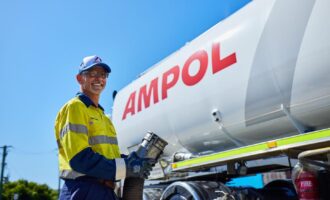The new GM dexos2: It’s complicated
By Hank Hogan
At the UNITI Mineral Oil Technology Congress held in Stuttgart, Germany in April, Thomas Hickl, an engineer for Opel, outlined the evolution of General Motors’ dexos engine oil specification. He noted that lubricants for GM’s new dexos2 specification, which covers diesel engines, will have to pass a low speed stochastic pre-ignition (LSPI) test.
This will be true even though diesel engines don’t experience unpredictable pre-ignition, the hallmark of LSPI, while gasoline engines do. Why, then, does dexos2 even include an LSPI test?
“There can be non-technical reasons to require even things that are not necessary for a diesel engine, which is LSPI protection,” Hickl said.
The non-technical reason has to do with GM opting for a single specification in Europe, which will apply to both gasoline and diesel engine oils. This is because of the high percentage of light-duty diesel engines in Europe, unlike in the U.S., and GM’s move to simplify the supply chain. Elsewhere in the world, GM requires dexos1 for gasoline engines and dexos2 for diesel engines.
That decision illustrates one of the main points of Hickl’s talk: there is increasing complexity in engines and fuels, which is impacting lubricant specifications as well.
For the new dexos2 specification, due out this year, this translates into six new lab/bench tests and 12 engine tests, presenting a particular challenge.
“The biggest set of requirements needs to be tested in full engine tests,” Hickl said. He said the requirement for 12 engine tests is due to engines having approximately 10,000 parts, with the majority of these interacting with the oil during combustion. What’s more, engines have been downsized, while producing more power. Hickl said that the engine used for wear tests in the first generation dexos2, which was launched in 2000, displaced 2.2 litres and produced 127.3 newton-metres per liter (N·m/L) of specific torque. In contrast, the engine for the new wear test in dexos2, which was launched in 2013, displaces 2.0 litres and produces a specific torque of 200 (N·m/L) Nm/L, an increase in power of nearly 60%.
On top of this downsizing, engine drain intervals are being extended. Another factor that further stresses the lubricant is that the new dexos2 specification includes LSPI, turbocharger deposit and biodiesel compatibility requirements, which were not in the old specification.
In response, lubricant formulations have become more complex, with a combination of base oils making up 75% to 90%. The rest, which can be up to 25% by mass, is an additive package designed to do everything from keeping the engine clean to reducing friction or improving viscosity-temperature dependency.
Fortunately for lubricant formulators, the dexos2 specification is set up so that there will be new viscosity classes. The old viscosity grades will remain for backward compatibility and will not need, for instance, to demonstrate LSPI performance. The new viscosity grades, such as SAE xW-20, will have to meet LSPI and other requirements.
Some of the new requirements offer unique capabilities and present one-of-a-kind challenges. For instance, Hickl mentioned two completely new tests. The first, IQ8547, is a fluid profile measurement. It creates a chemical fingerprint by looking at measurement signals generated from components of the fluid. The resulting combination of signals yields a unique lubricant identifier. The second new assay is GM’s re-testing of in-the-field products to check the lubricant’s in-service performance.
Hickl also discussed test development for new specifications from ACEA, the association of European OEMs. He noted that organisations like ACEA face similar challenges as those confronting GM: downsized engines, more complex lubricant formulations and increasing regulatory requirements that mandate better fuel economy and lower emissions.
On top of that, though, ACEA test development is a collaboration of many industry partners. By necessity, this makes test development more complex and can slow things down. This is part of the reason why the release of the new ACEA specification slipped from 2014 to 2016.
It also highlights the current hurdles being faced by the industry today and in the future. “As neither engine complexity nor legal requirements are expected to ease, development of needed engine tests in time will continue to be the industry’s biggest task,” Hickl said.








